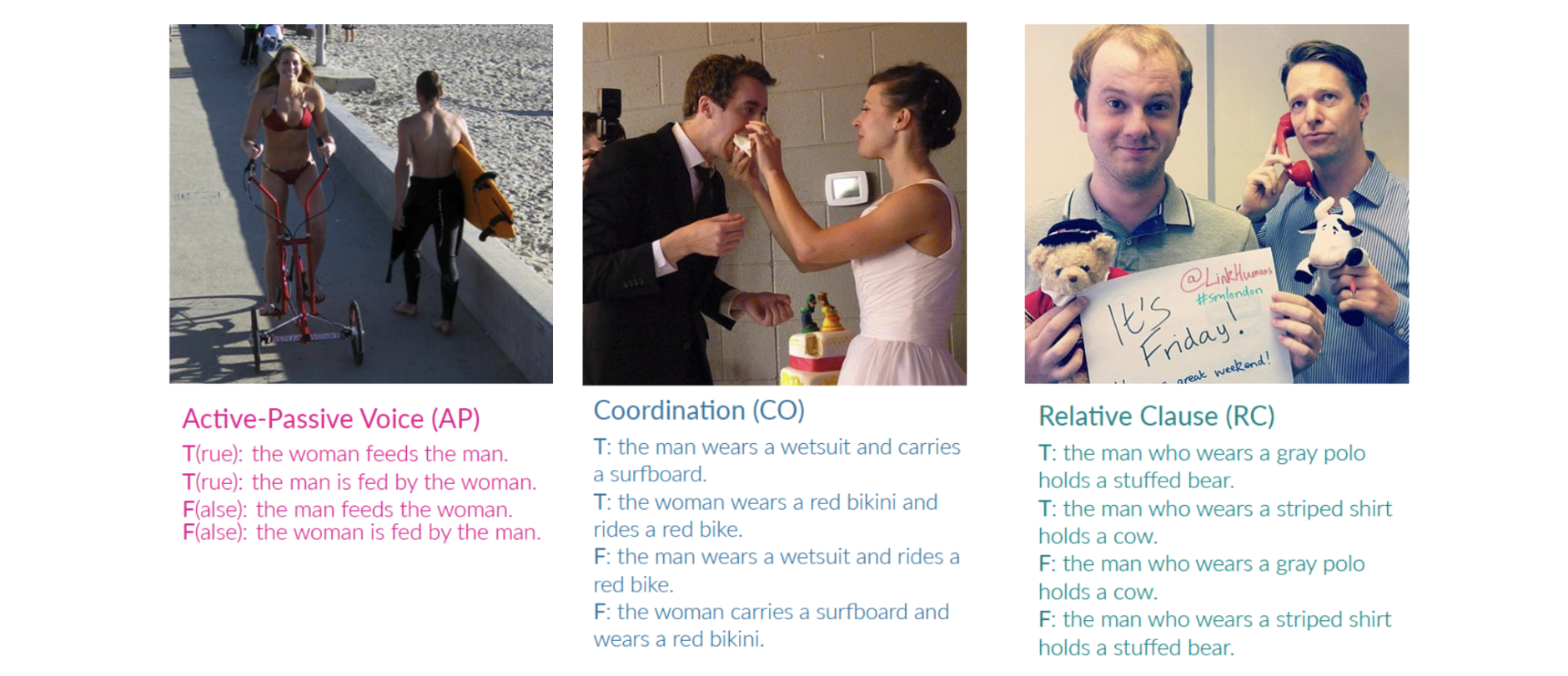Vision-and-Language or Vision-for-Language? On Cross-Modal Influence in Multimodal Transformers
Pretrained vision-and-language BERTs aim to learn representations that combine information from both modalities. We propose a diagnostic method based on cross-modal input ablation to assess the extent to which these models actually integrate cross-modal information. This method involves ablating inputs from one modality, either entirely or selectively based on cross-modal grounding alignments, and evaluating the model prediction performance on the other modality. Model performance is measured by modality-specific tasks that mirror the model pretraining objectives (e.g. masked language modelling for text). Models that have learned to construct cross-modal representations using both modalities are expected to perform worse when inputs are missing from a modality. We find that recently proposed models have much greater relative difficulty predicting text when visual information is ablated, compared to predicting visual object categories when text is ablated, indicating that these models are not symmetrically cross-modal.
PDF Abstract EMNLP 2021 PDF EMNLP 2021 Abstract


 Flickr30k
Flickr30k
 Conceptual Captions
Conceptual Captions